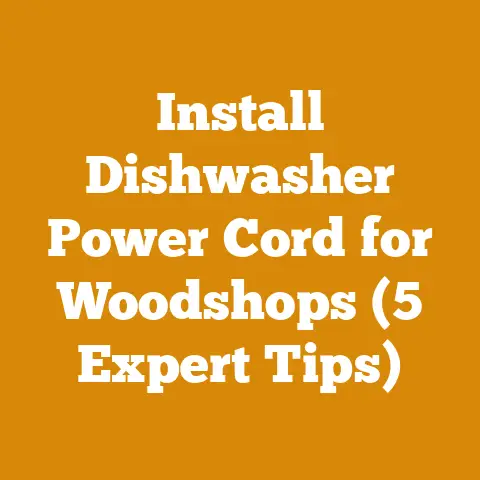Corn Pellets for Heating (5 Key Burn Efficiency Insights)
Alright, gather ’round, folks, because we’re about to dive headfirst into the fascinating world of corn pellets for heating. Now, I know what you’re thinking: “Corn pellets? Sounds like something a squirrel would use to heat his tiny acorn home.” And you’re not entirely wrong! But trust me, there’s more to this than meets the eye. I once spent a whole winter trying to convince my neighbor that corn pellets were the future of home heating. He just kept pointing at his wood pile and chuckling. But by February, when his back was aching from splitting logs and my house was toasty warm, he started to sing a different tune. So, let’s explore this topic together.
Corn Pellets for Heating: 5 Key Burn Efficiency Insights
In this article, I’m going to walk you through the ins and outs of using corn pellets for heating, focusing on five key insights that will help you maximize burn efficiency. We’ll cover everything from understanding the basics of corn pellet fuel to optimizing your stove settings. By the end, you’ll be well-equipped to make an informed decision about whether corn pellets are right for your heating needs.
Understanding Corn Pellet Fuel
First, let’s lay the groundwork. What exactly are corn pellets, and why should you consider using them?
What are Corn Pellets?
Corn pellets are a biofuel made from dried and compressed corn kernels. They are typically produced from field corn (the same stuff used for animal feed), not the sweet corn you enjoy on the cob. The corn is dried to a low moisture content (usually around 10-12%), ground, and then compressed into small, uniform pellets.
Why Choose Corn Pellets?
There are several compelling reasons to consider corn pellets as a heating fuel:
- Renewable Resource: Corn is a renewable resource, and using corn pellets supports local agriculture.
- Lower Emissions: Compared to fossil fuels like oil or propane, corn pellets produce lower net greenhouse gas emissions.
- Cost-Effective: In some regions, corn pellets can be a more affordable heating option than traditional fuels.
- High Heat Output: Corn pellets can produce a significant amount of heat, making them suitable for heating homes and other spaces.
- Easy to Store: Pellets are relatively easy to store, taking up less space than firewood and being less messy than coal.
Corn vs. Wood Pellets: A Detailed Comparison
I remember the first time I considered switching from wood to corn pellets. I was knee-deep in splitting oak logs, my back was screaming, and I thought, “There has to be a better way!” That’s when I started researching alternatives. Here’s a comparison of corn and wood pellets:
| Feature | Corn Pellets | Wood Pellets |
|---|---|---|
| Heat Output | Approximately 8,000-9,000 BTU/lb | Approximately 8,000-8,500 BTU/lb |
| Ash Content | Higher (2-5%) | Lower (less than 1%) |
| Moisture Content | Typically 10-12% | Typically 6-8% |
| Cost | Varies by region; can be more affordable than wood pellets in some areas | Varies by region; generally consistent pricing |
| Availability | Can be more seasonal and regionally dependent | Generally more widely available |
| Environmental Impact | Renewable resource, lower net emissions compared to fossil fuels | Renewable resource, lower net emissions compared to fossil fuels |
| Stove Compatibility | Requires a stove designed for corn or multi-fuel use | Designed for standard pellet stoves |
| Storage | Susceptible to moisture; requires dry storage | Requires dry storage |
| Maintenance | Requires more frequent cleaning due to higher ash content | Requires regular cleaning, but less frequent than corn pellet stoves |
As you can see, both corn and wood pellets have their pros and cons. The key is to weigh these factors against your specific needs and circumstances.
Key Insight #1: Stove Compatibility is Crucial
Not all pellet stoves are created equal. Using corn pellets effectively requires a stove specifically designed for them or a multi-fuel stove capable of burning corn.
Why You Need a Corn-Compatible Stove
Corn pellets have a higher ash content than wood pellets. This means they produce more residue when burned, which can clog up a standard pellet stove. Corn-compatible stoves are designed with features to handle this, such as:
- Larger Ash Pans: To accommodate the increased ash volume.
- Agitators: To break up clinkers (hardened ash deposits) that can form during combustion.
- Adjustable Airflow: To optimize the burning process for corn pellets.
Identifying a Corn-Compatible Stove
Look for stoves that are explicitly labeled as “corn stoves” or “multi-fuel stoves.” Check the manufacturer’s specifications to ensure the stove is approved for burning corn pellets.
My Personal Experience
I learned this lesson the hard way. I tried burning corn pellets in my old wood pellet stove, thinking, “How different could it be?” Big mistake! The stove clogged up within a few hours, and I spent the next day dismantling and cleaning it. That’s when I invested in a proper multi-fuel stove.
Key Insight #2: Moisture Management is Non-Negotiable
Corn pellets are hygroscopic, meaning they readily absorb moisture from the air. This can significantly impact their burn efficiency and even damage your stove.
The Impact of Moisture
When corn pellets absorb moisture, they become less energy-dense and harder to ignite. This leads to:
- Reduced Heat Output: You’ll need to burn more pellets to achieve the same level of heat.
- Incomplete Combustion: Moist pellets don’t burn as cleanly, resulting in more smoke and emissions.
- Clinkering: Moisture can contribute to the formation of hard, stubborn clinkers that can block airflow in your stove.
Proper Storage Techniques
To prevent moisture absorption, store your corn pellets in a dry, airtight container. Here are some tips:
- Use a Pellet Bin or Hopper: These are specifically designed to keep pellets dry and protected.
- Store in a Dry Location: Choose a location with low humidity, such as a garage or shed with good ventilation.
- Elevate the Pellets: Place the pellets on a pallet or platform to prevent moisture from seeping up from the floor.
- Seal Open Bags: If you’re not using a dedicated bin, seal open bags of pellets tightly to prevent moisture from entering.
Monitoring Moisture Levels
Consider using a moisture meter to check the moisture content of your corn pellets. Ideally, you want to keep them below 12%. If you suspect your pellets have absorbed moisture, try drying them out before use. Spreading them out in a thin layer in a sunny, well-ventilated area can help.
Key Insight #3: Optimizing Stove Settings for Corn
Burning corn pellets efficiently requires fine-tuning your stove settings. This is where things get a bit technical, but trust me, it’s worth the effort.
Understanding Stove Settings
Most corn-compatible stoves have adjustable settings for:
- Feed Rate: The amount of pellets fed into the burn pot.
- Airflow: The amount of air supplied to the combustion chamber.
Finding the Sweet Spot
The ideal settings will depend on your stove model, the quality of your corn pellets, and the desired heat output. Here’s a general approach:
- Start with the Manufacturer’s Recommendations: Consult your stove’s manual for recommended settings for corn pellets.
- Observe the Flame: A healthy corn pellet flame should be bright yellow-orange with minimal smoke.
- Adjust the Feed Rate: If the flame is weak or smoky, increase the feed rate. If the flame is too large or produces excessive ash, decrease the feed rate.
- Adjust the Airflow: If the flame is smoky, increase the airflow. If the flame is too intense or the pellets burn too quickly, decrease the airflow.
- Monitor Ash Production: Keep an eye on the amount of ash produced. Excessive ash indicates incomplete combustion, which can be caused by improper settings or poor-quality pellets.
Case Study: My Experiment with Airflow
I once spent an entire weekend experimenting with different airflow settings on my stove. I meticulously recorded the heat output, ash production, and pellet consumption for each setting. I discovered that slightly increasing the airflow above the manufacturer’s recommendation resulted in a cleaner, more efficient burn. The key is to experiment and find what works best for your specific setup.
Key Insight #4: Regular Maintenance is Essential
Due to the higher ash content of corn pellets, regular maintenance is crucial for maintaining burn efficiency and preventing stove problems.
Cleaning Frequency
Plan to clean your stove more frequently when burning corn pellets than you would with wood pellets. A good rule of thumb is to clean the ash pan every 1-2 days and perform a more thorough cleaning (including the burn pot, heat exchangers, and exhaust vent) every 1-2 weeks.
Cleaning Procedures
Follow these steps for regular maintenance:
- Turn Off and Cool Down: Always turn off the stove and allow it to cool completely before cleaning.
- Empty the Ash Pan: Remove the ash pan and dispose of the ashes properly.
- Clean the Burn Pot: Remove any clinkers or ash buildup from the burn pot. A scraper or wire brush can be helpful.
- Clean Heat Exchangers: Use a brush or vacuum to remove ash from the heat exchangers.
- Inspect and Clean the Exhaust Vent: Check the exhaust vent for obstructions and clean it as needed. A chimney brush can be used to remove creosote and ash buildup.
- Vacuum the Stove Interior: Use a vacuum cleaner to remove any loose ash or debris from the stove interior.
The Importance of Professional Inspections
In addition to regular cleaning, schedule a professional inspection of your stove and venting system at least once a year. A qualified technician can identify potential problems and ensure your stove is operating safely and efficiently.
Key Insight #5: Sourcing Quality Corn Pellets
The quality of your corn pellets can significantly impact their burn efficiency and overall performance. Not all corn pellets are created equal.
What to Look For
When sourcing corn pellets, consider the following factors:
- Moisture Content: Look for pellets with a moisture content of 12% or less.
- Ash Content: While corn pellets naturally have a higher ash content than wood pellets, try to find pellets with a lower ash content (ideally below 5%).
- Pellet Size and Uniformity: Uniformly sized pellets will feed more consistently and burn more evenly.
- Cleanliness: Look for pellets that are free of debris, such as stalks, leaves, or dirt.
- Supplier Reputation: Choose a reputable supplier with a track record of providing high-quality corn pellets.
Local vs. National Suppliers
Consider sourcing your corn pellets from local suppliers. This can support local agriculture and reduce transportation costs. However, be sure to compare prices and quality with national suppliers to ensure you’re getting the best value.
Testing and Sampling
Before buying a large quantity of corn pellets, ask for a sample to test. Burn a small amount in your stove and observe the flame, ash production, and heat output. This will give you a good indication of the pellet quality.
Troubleshooting Common Issues
Even with the best practices, you may encounter some common issues when burning corn pellets. Here are some troubleshooting tips:
- Clinkers: If you’re experiencing excessive clinkering, try adjusting the airflow or switching to a different brand of corn pellets.
- Smoke: If your stove is producing excessive smoke, increase the airflow or ensure the pellets are dry.
- Poor Heat Output: If you’re not getting enough heat, increase the feed rate or check the moisture content of the pellets.
- Stove Clogging: If your stove is clogging frequently, increase the cleaning frequency and consider using a pellet stove cleaner.
Safety Considerations
Safety should always be a top priority when using any heating appliance. Here are some important safety considerations for corn pellet stoves:
- Install a Carbon Monoxide Detector: Carbon monoxide is a colorless, odorless gas that can be deadly. Install a carbon monoxide detector near your stove and test it regularly.
- Maintain Proper Ventilation: Ensure your stove is properly vented to the outside to prevent the buildup of carbon monoxide and other harmful gases.
- Keep Flammable Materials Away: Keep flammable materials, such as curtains, furniture, and paper, away from the stove.
- Supervise Children and Pets: Keep children and pets away from the stove to prevent burns or other injuries.
- Follow Manufacturer’s Instructions: Always follow the manufacturer’s instructions for installation, operation, and maintenance of your stove.
Cost-Benefit Analysis
Before making the switch to corn pellets, it’s important to consider the cost-benefit analysis. Here are some factors to consider:
- Pellet Price: Compare the price of corn pellets to other heating fuels in your area.
- Stove Cost: Factor in the cost of purchasing a corn-compatible stove if you don’t already have one.
- Maintenance Costs: Consider the increased maintenance costs associated with burning corn pellets.
- Heating Efficiency: Evaluate the heating efficiency of corn pellets compared to other fuels.
- Environmental Benefits: Weigh the environmental benefits of using a renewable fuel source.
The Future of Corn Pellet Heating
Corn pellet heating is a growing trend, and I believe it has the potential to become an even more popular heating option in the future. As technology advances and corn pellet production becomes more efficient, we can expect to see:
- Improved Stove Designs: More efficient and user-friendly corn stoves.
- Higher Quality Pellets: Pellets with lower ash content and higher heat output.
- Increased Availability: Wider availability of corn pellets in more regions.
- Lower Prices: More competitive pricing compared to other heating fuels.
Conclusion: Is Corn Pellet Heating Right for You?
So, is corn pellet heating right for you? The answer depends on your individual circumstances and priorities. If you’re looking for a renewable, cost-effective, and efficient heating option, corn pellets may be worth considering. However, it’s important to do your research, understand the key burn efficiency insights, and weigh the pros and cons before making a decision.
Remember my neighbor? Well, after seeing how warm and cozy my house was all winter, he finally caved and bought a multi-fuel stove. Now, he’s a corn pellet convert, and we spend our evenings swapping stories about the joys of efficient heating.
Next Steps
Ready to take the plunge? Here are some actionable steps you can take:
- Research Corn-Compatible Stoves: Explore different models and compare features.
- Source Corn Pellets Locally: Find a reputable supplier in your area.
- Test and Experiment: Try burning a small amount of corn pellets in your stove and observe the results.
- Optimize Your Stove Settings: Fine-tune the settings for maximum efficiency.
- Enjoy the Warmth! Sit back, relax, and enjoy the comfort of your corn-heated home.






